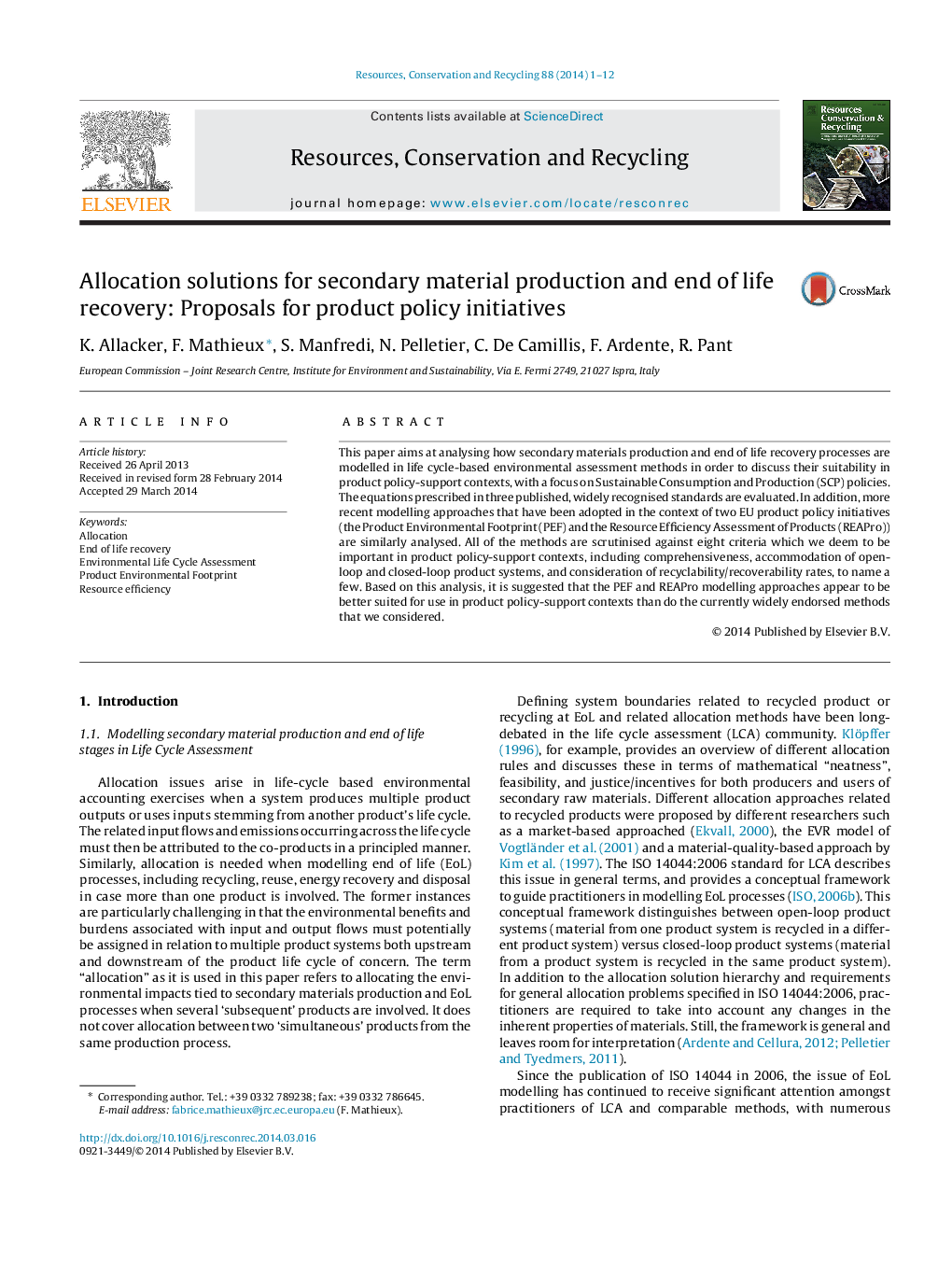| Article ID | Journal | Published Year | Pages | File Type |
|---|---|---|---|---|
| 7495406 | Resources, Conservation and Recycling | 2014 | 12 Pages |
Abstract
This paper aims at analysing how secondary materials production and end of life recovery processes are modelled in life cycle-based environmental assessment methods in order to discuss their suitability in product policy-support contexts, with a focus on Sustainable Consumption and Production (SCP) policies. The equations prescribed in three published, widely recognised standards are evaluated. In addition, more recent modelling approaches that have been adopted in the context of two EU product policy initiatives (the Product Environmental Footprint (PEF) and the Resource Efficiency Assessment of Products (REAPro)) are similarly analysed. All of the methods are scrutinised against eight criteria which we deem to be important in product policy-support contexts, including comprehensiveness, accommodation of open-loop and closed-loop product systems, and consideration of recyclability/recoverability rates, to name a few. Based on this analysis, it is suggested that the PEF and REAPro modelling approaches appear to be better suited for use in product policy-support contexts than do the currently widely endorsed methods that we considered.
Related Topics
Physical Sciences and Engineering
Energy
Renewable Energy, Sustainability and the Environment
Authors
K. Allacker, F. Mathieux, S. Manfredi, N. Pelletier, C. De Camillis, F. Ardente, R. Pant,
